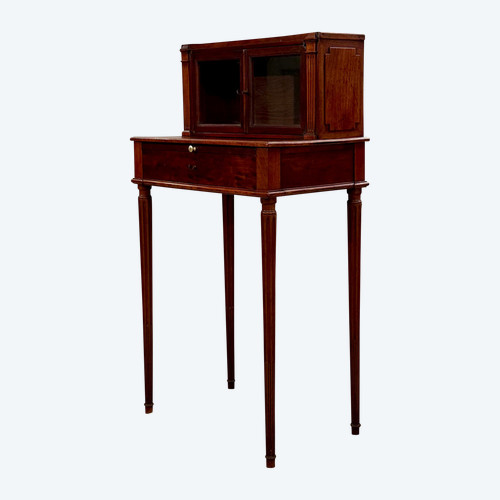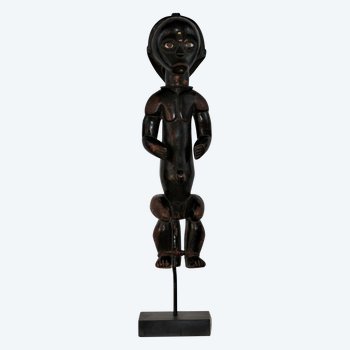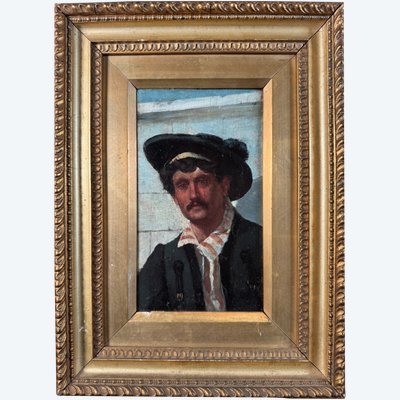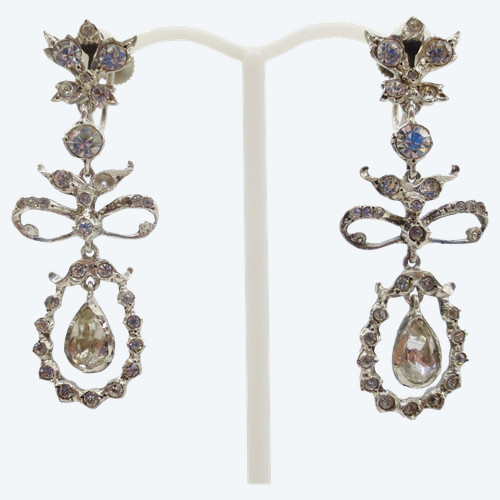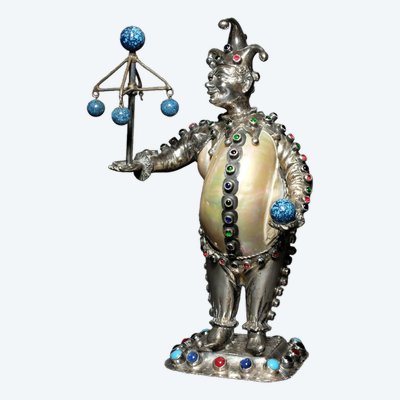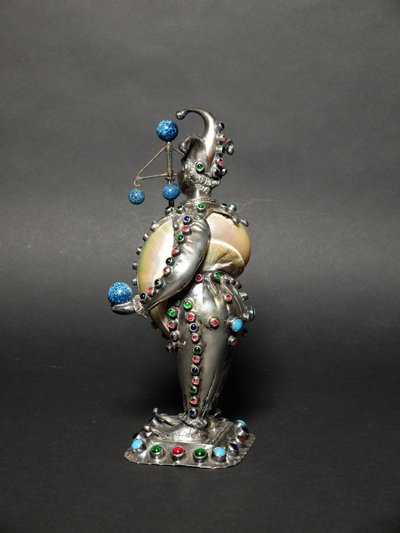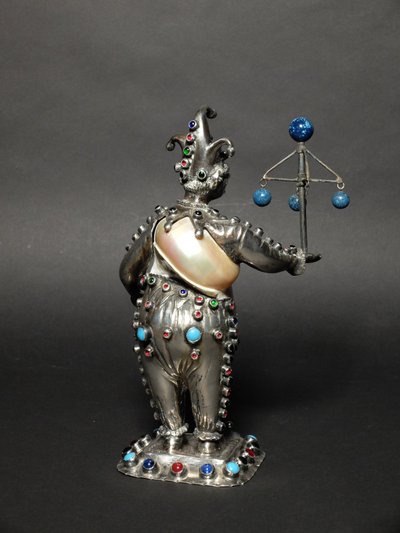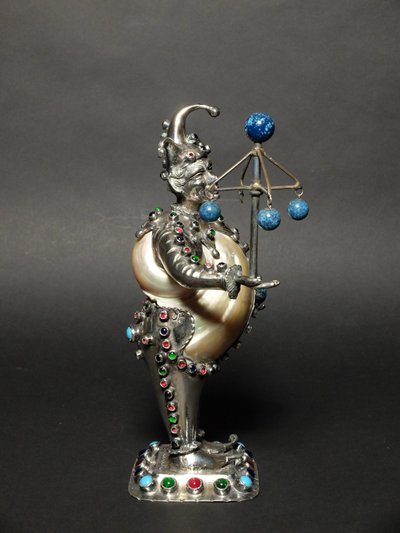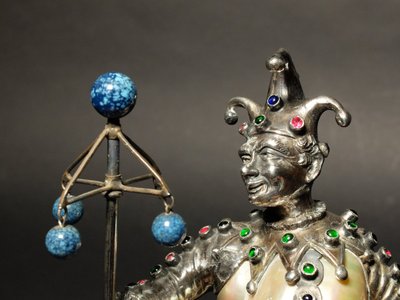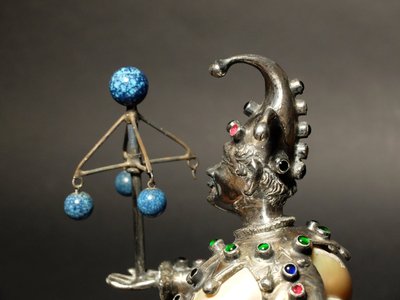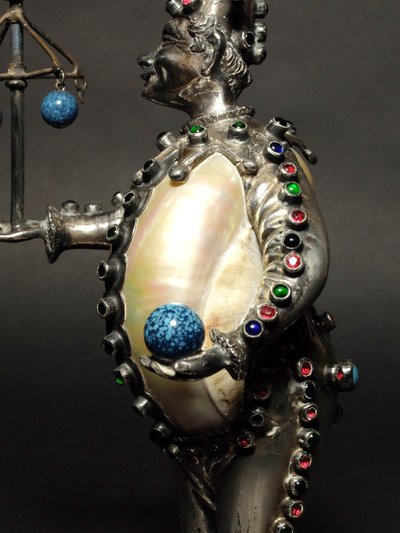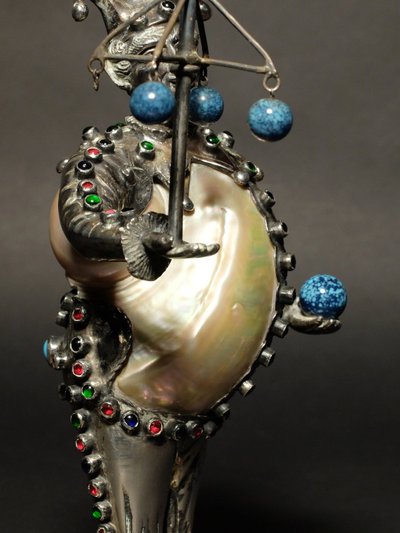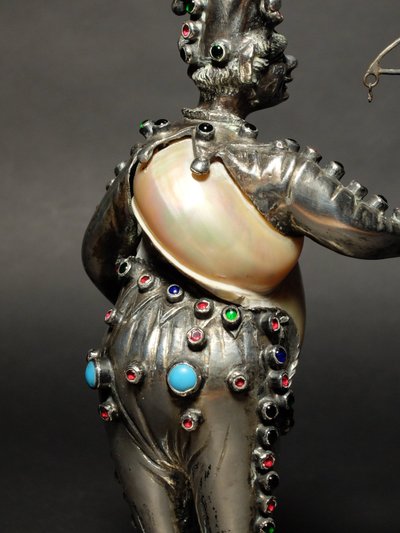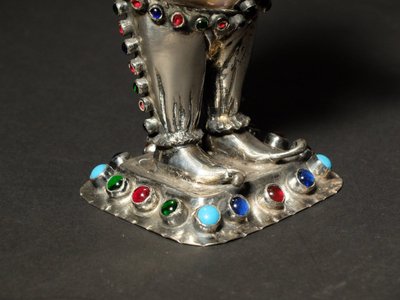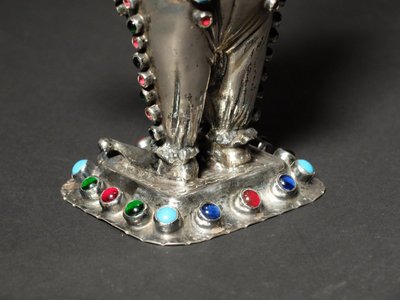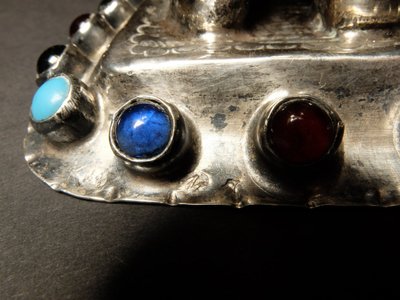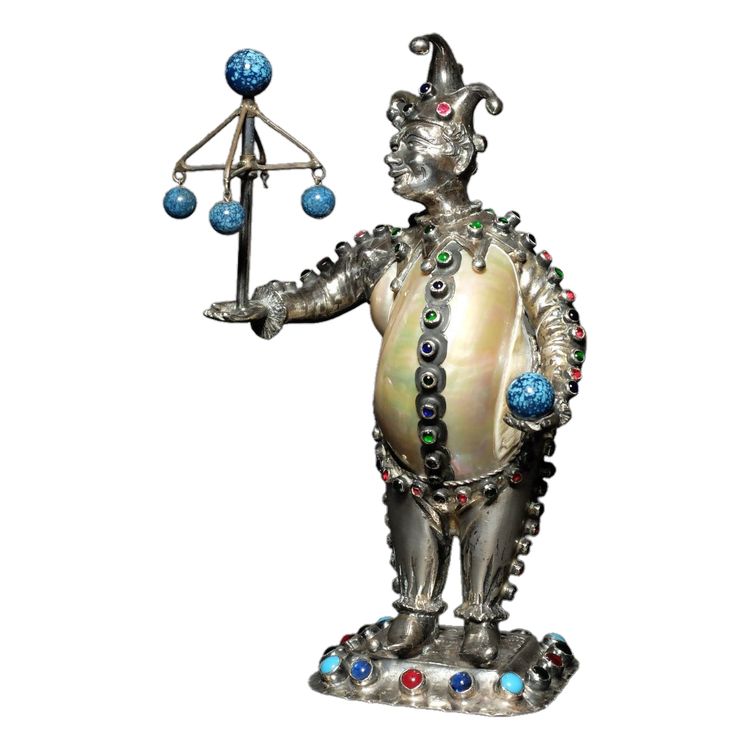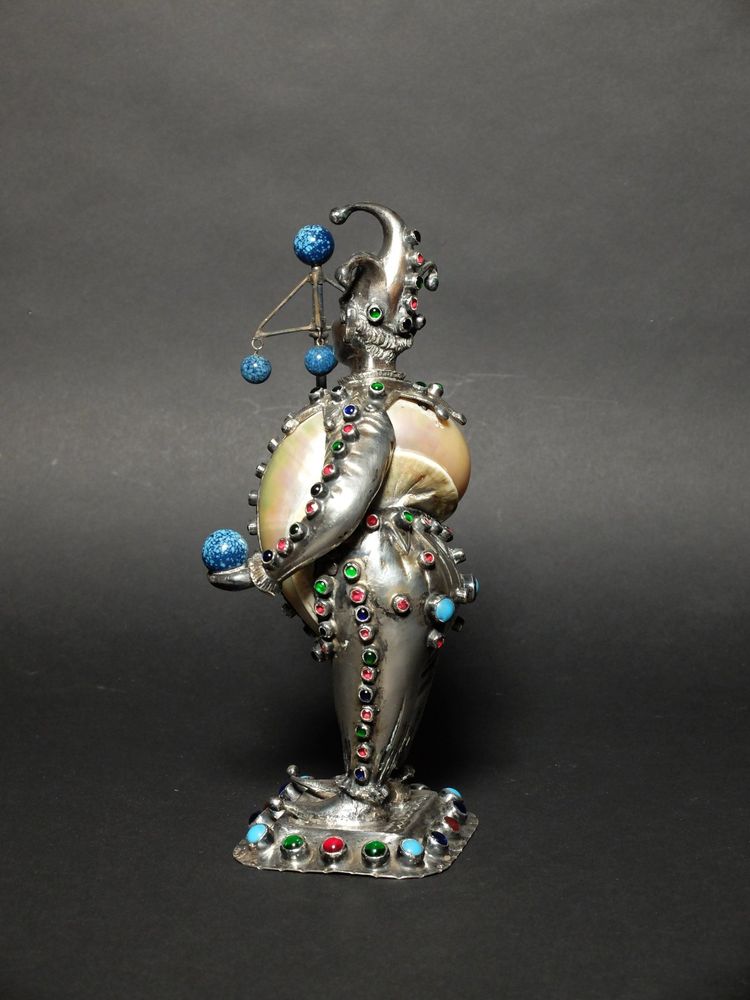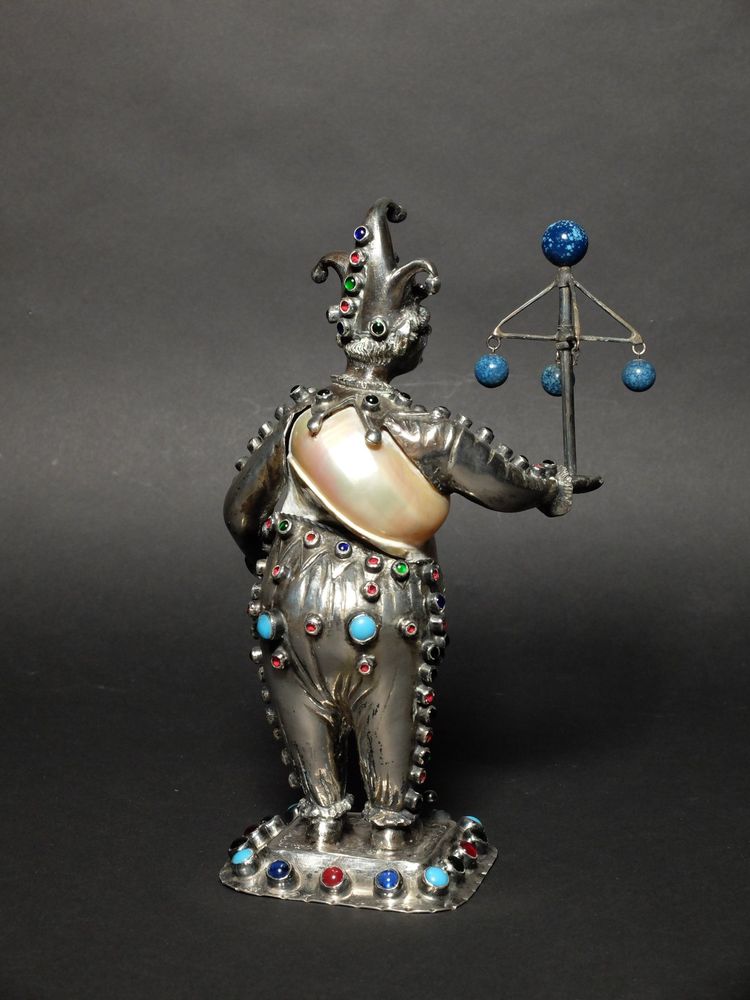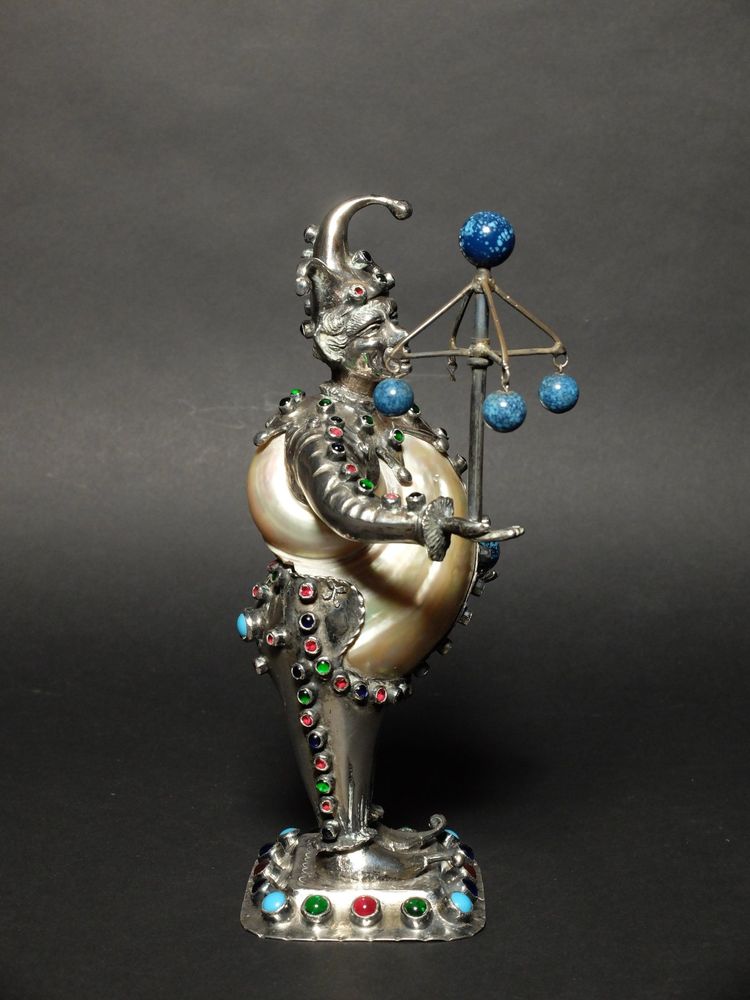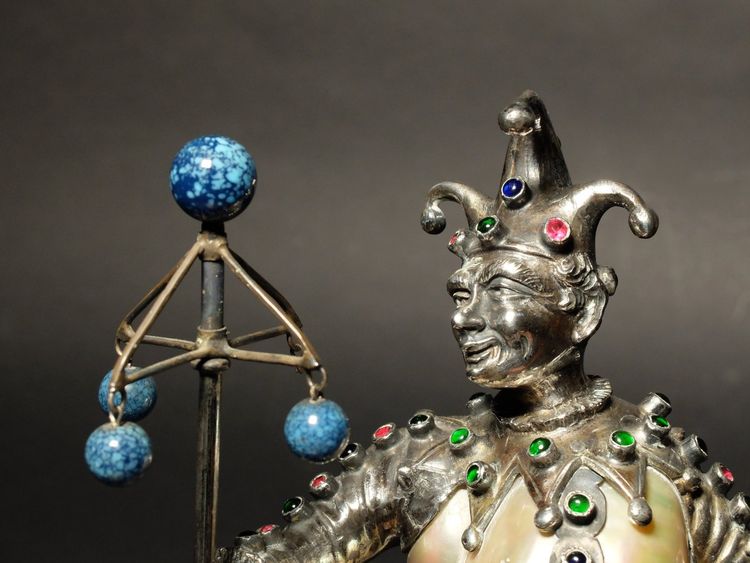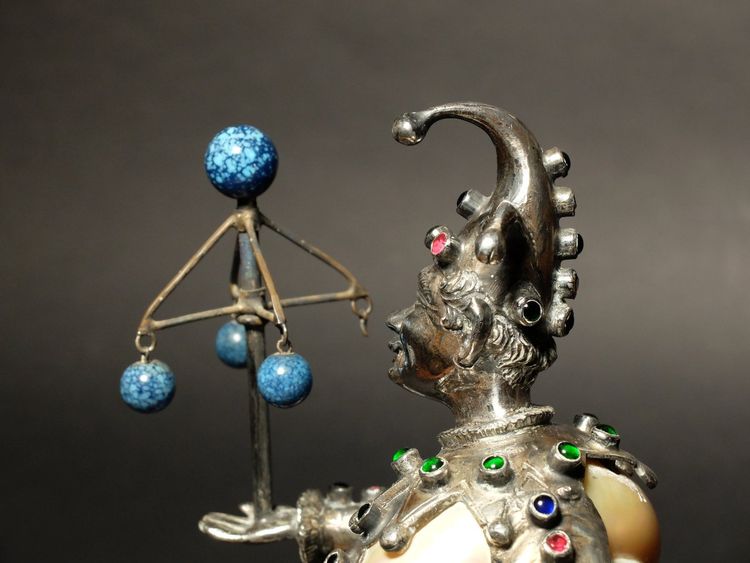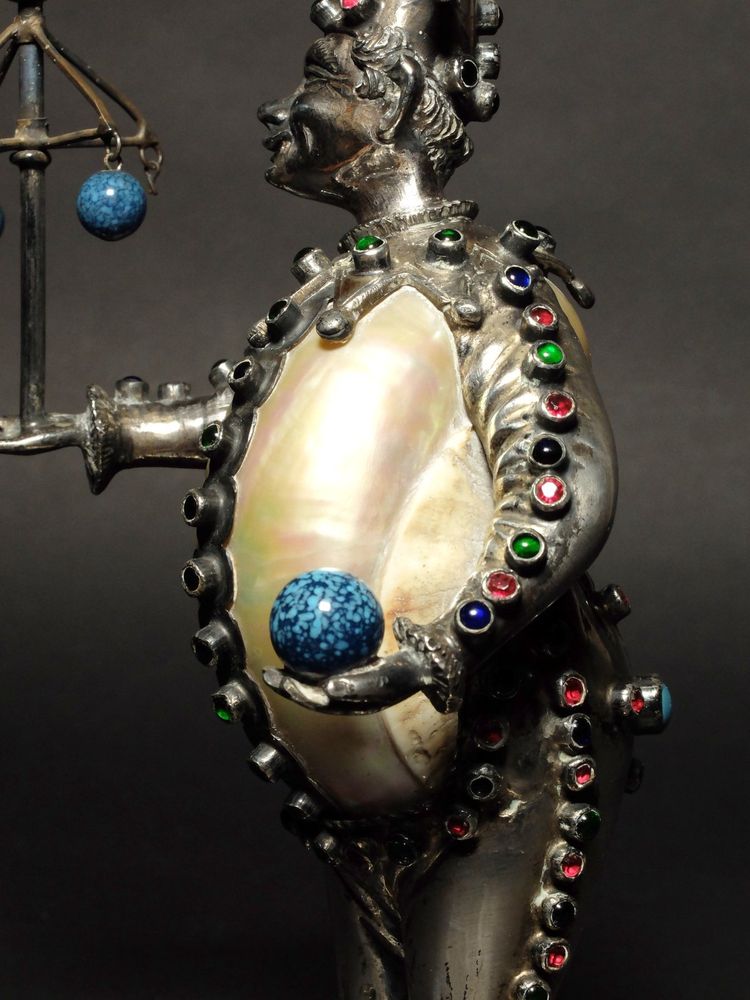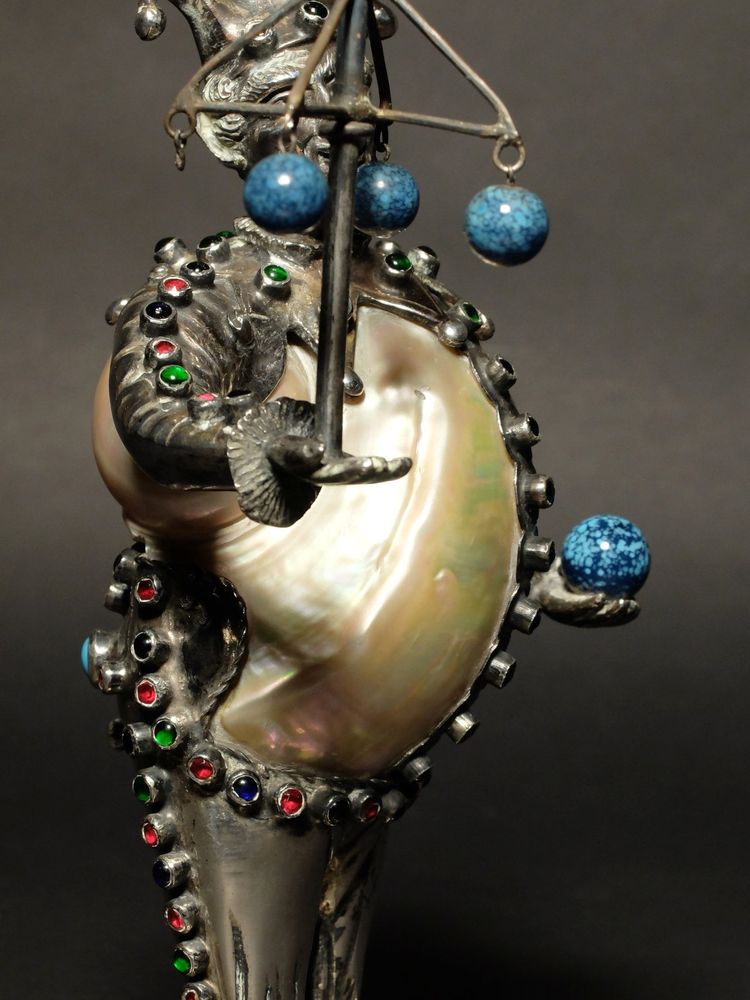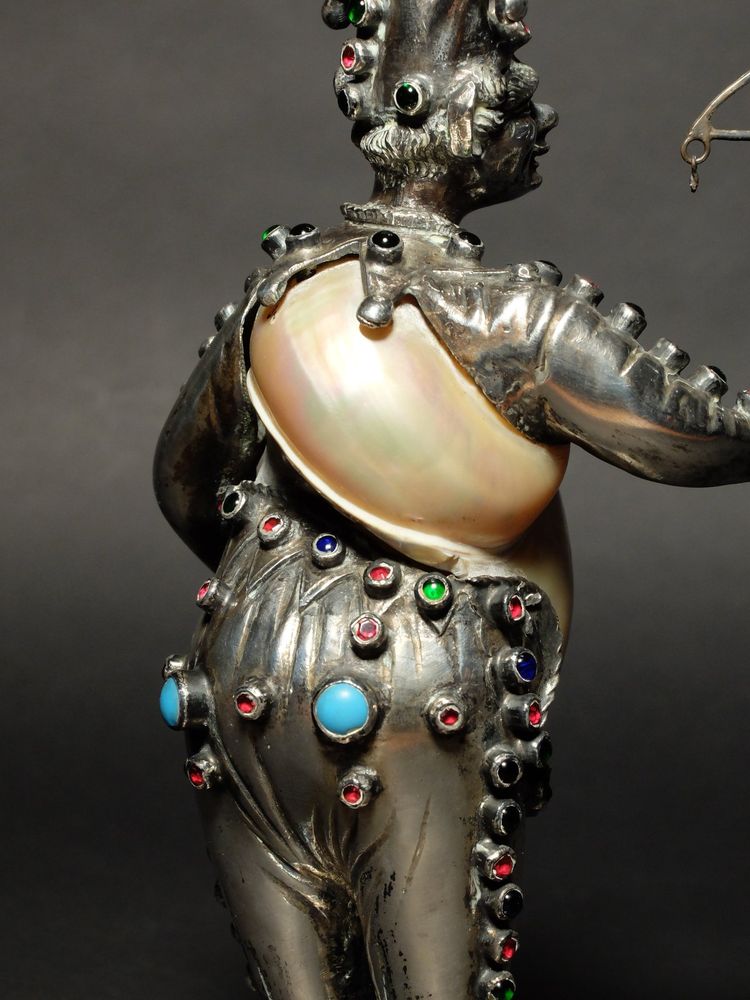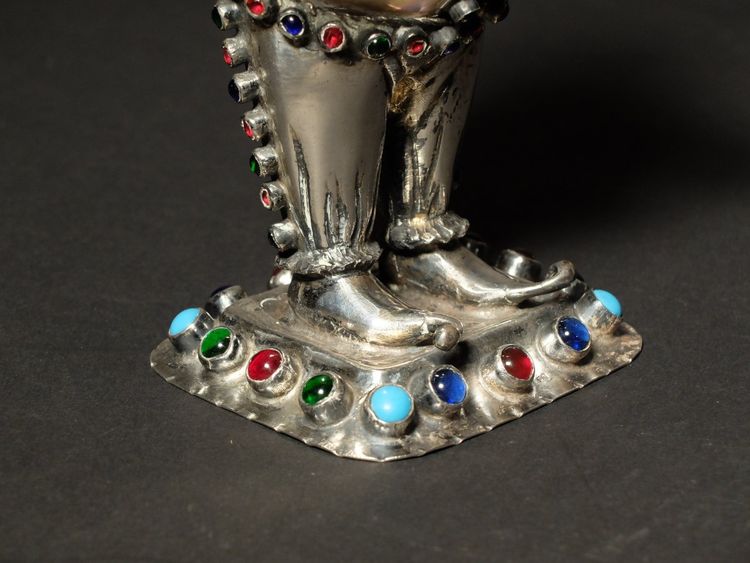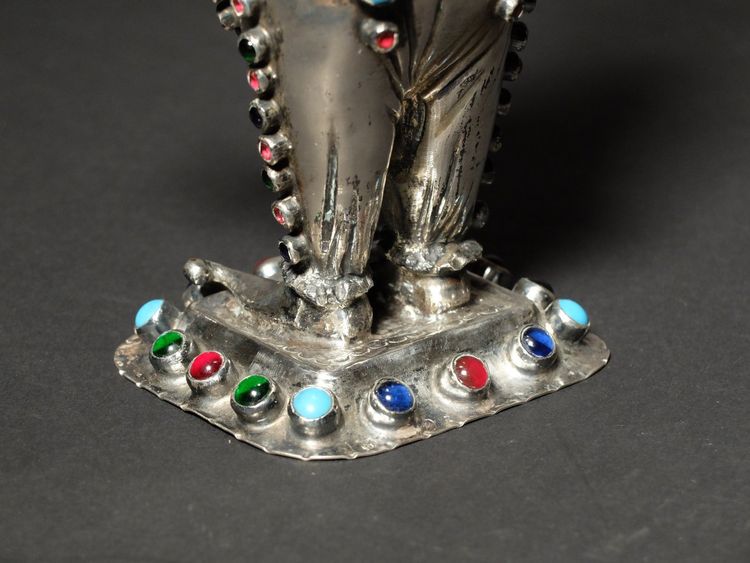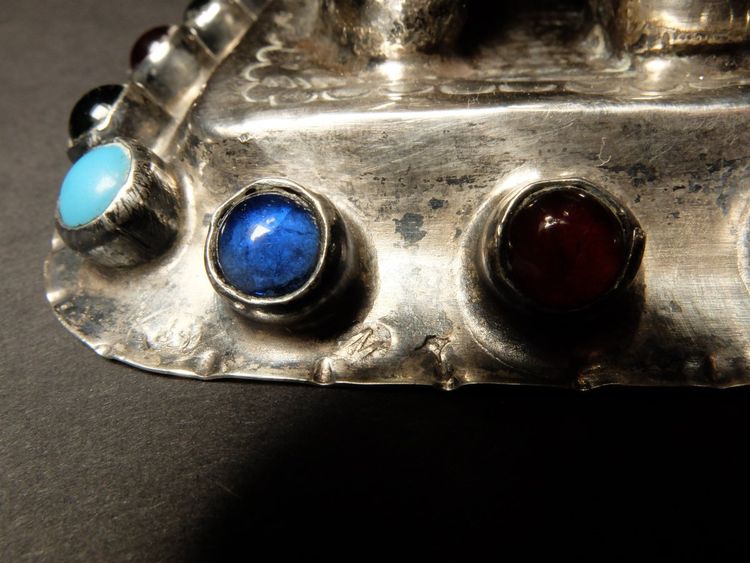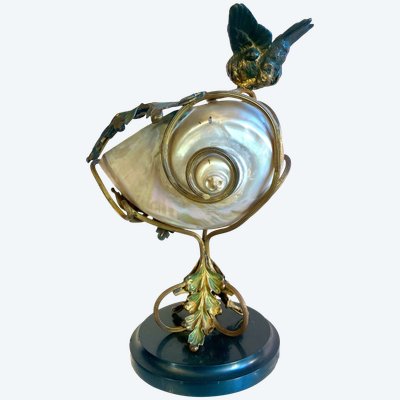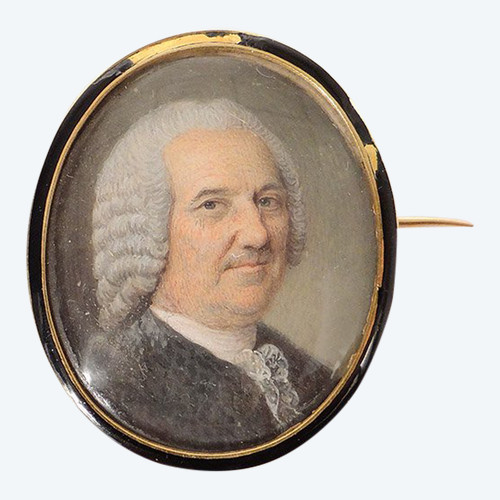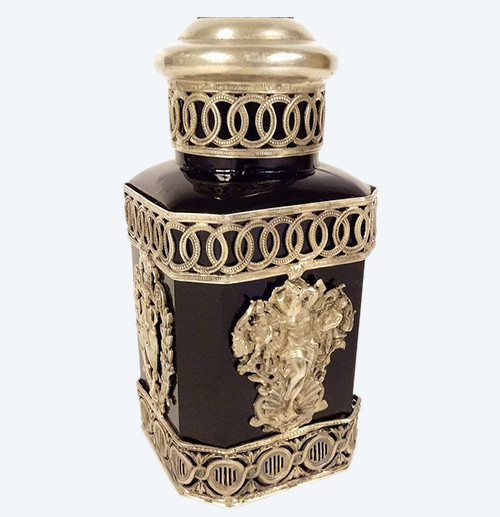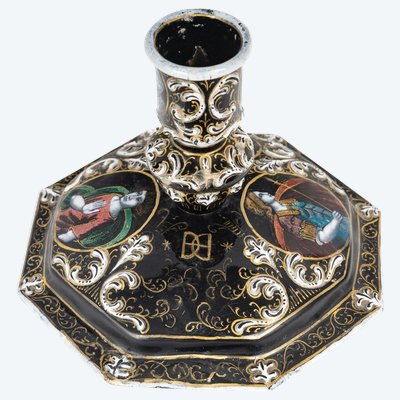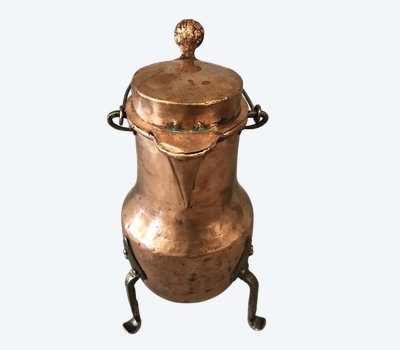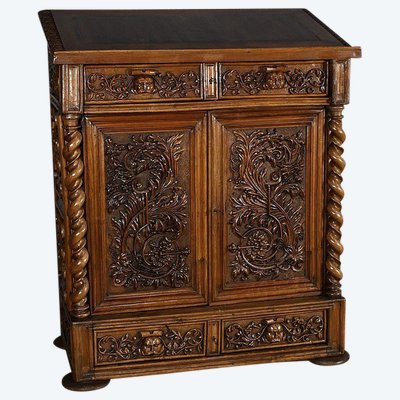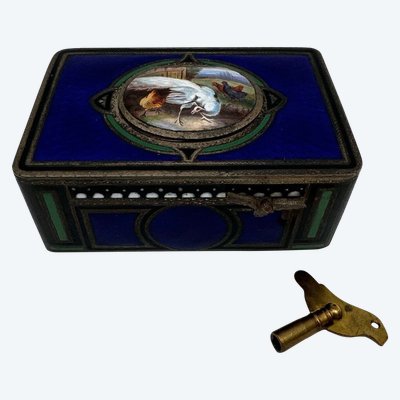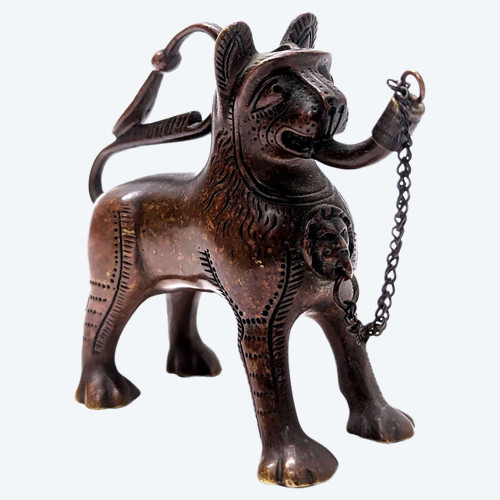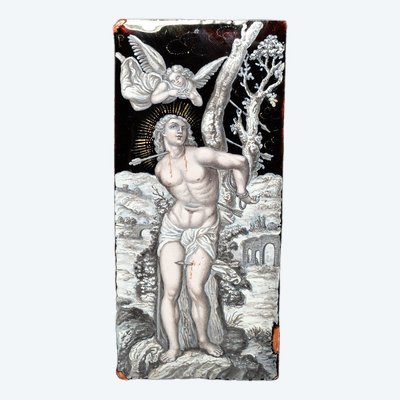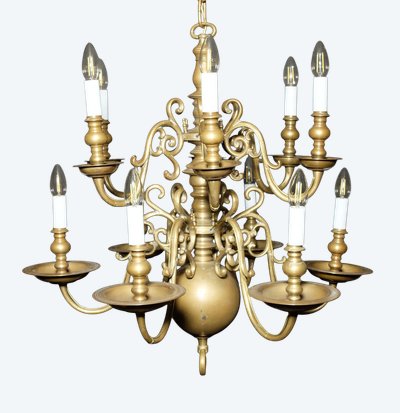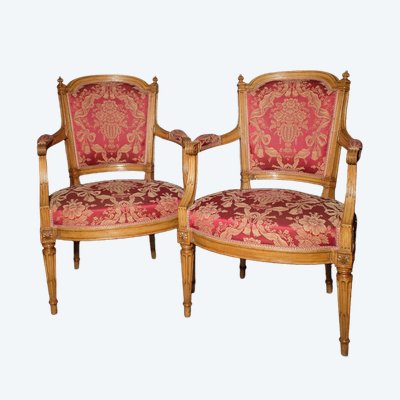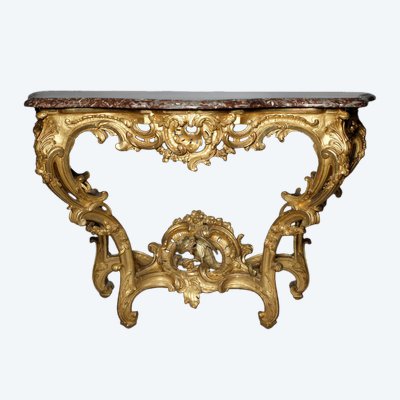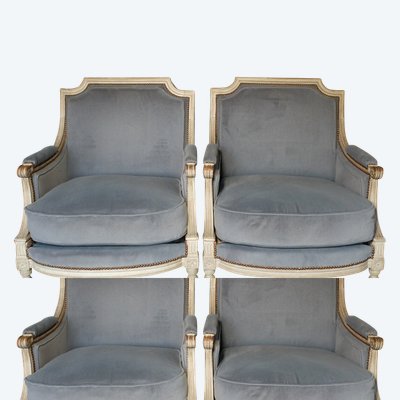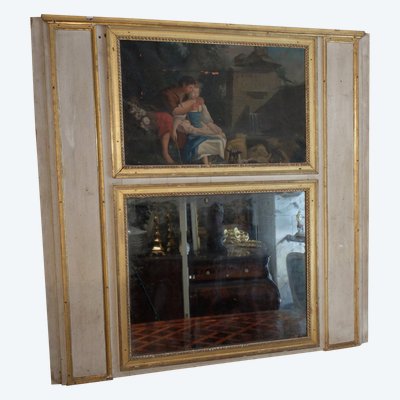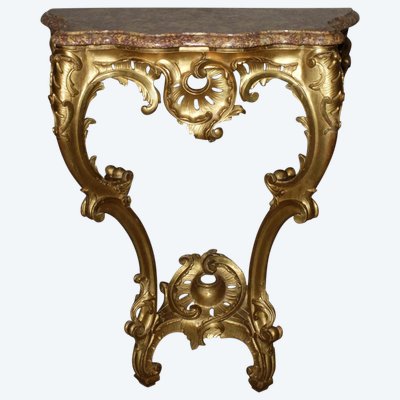This description has been translated and may not be completely accurate. Click here to see the original
Court jester figure featuring a nautilus mounted in sterling silver and set with colored cabochons.
In his left hand, he holds a lapis lazuli sphere, and in his right hand, a 4-branched mobile adorned with lapis lazuli balls. (A ball is missing from the mobile).
On the base, hallmarks including the letter N, from the city of Nuremberg.
Nuremberg, 19th century.
Height: 23 cm.
The jester, or king's fool, was a comic character whose profession was to make people laugh. Kings had their own jester, the only person who could make fun of the sovereign without consequence, although satire was always a risk, even a peril, for the artist.
Jesters are also occasionally used by armies to wage psychological warfare. They ride in front of the troops, provoke or mock the enemy, and sometimes serve as messengers. They are also used to boost the morale of their own army by singing songs and reciting stories.
The production of mounted nautilus appeared during the Renaissance, and is linked to the relationship between man and nature that was fashionable in the 16th century. Natural curiosities, or Naturalia, became both a subject of study and a collector's item. To enhance their brilliance, preciousness or rarity, goldsmiths designed and cast rich mounts, transforming shells into cups, hanaps, figures or even animals.
Preserved in cabinets of curiosities or chambers of wonders, they are as fascinating today as they were then. The 19th century produced some fine examples, particularly in Germany.
A similar model, but adorned with rock crystal balls, went on sale at Helios Auction in New York on February 16, 2025.
Another with amethyst crystals was presented at the "Le monde de François d'Ansembourg" exhibition in Brussels in 2022.
Ref: 1HV2C2B25V

